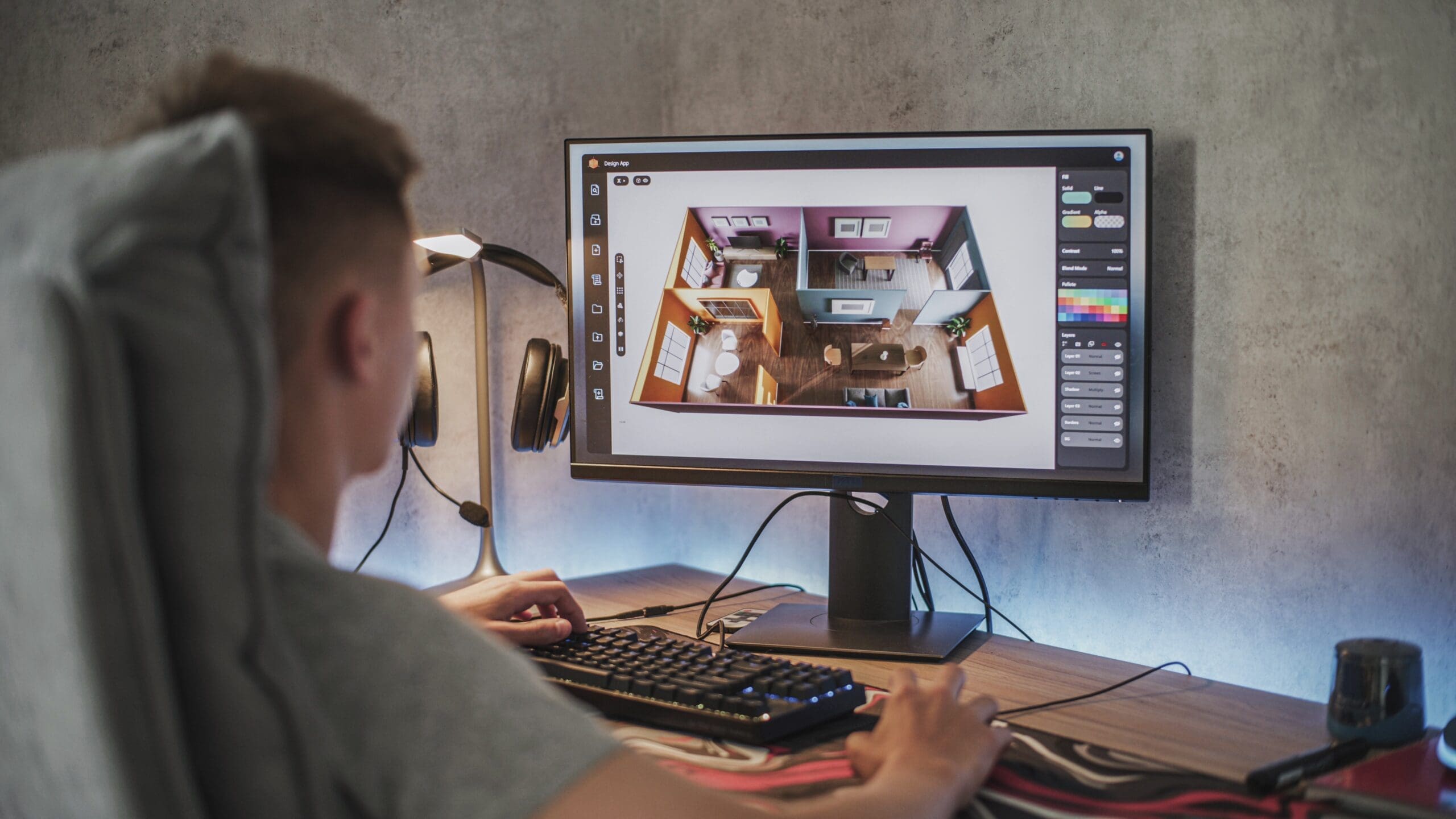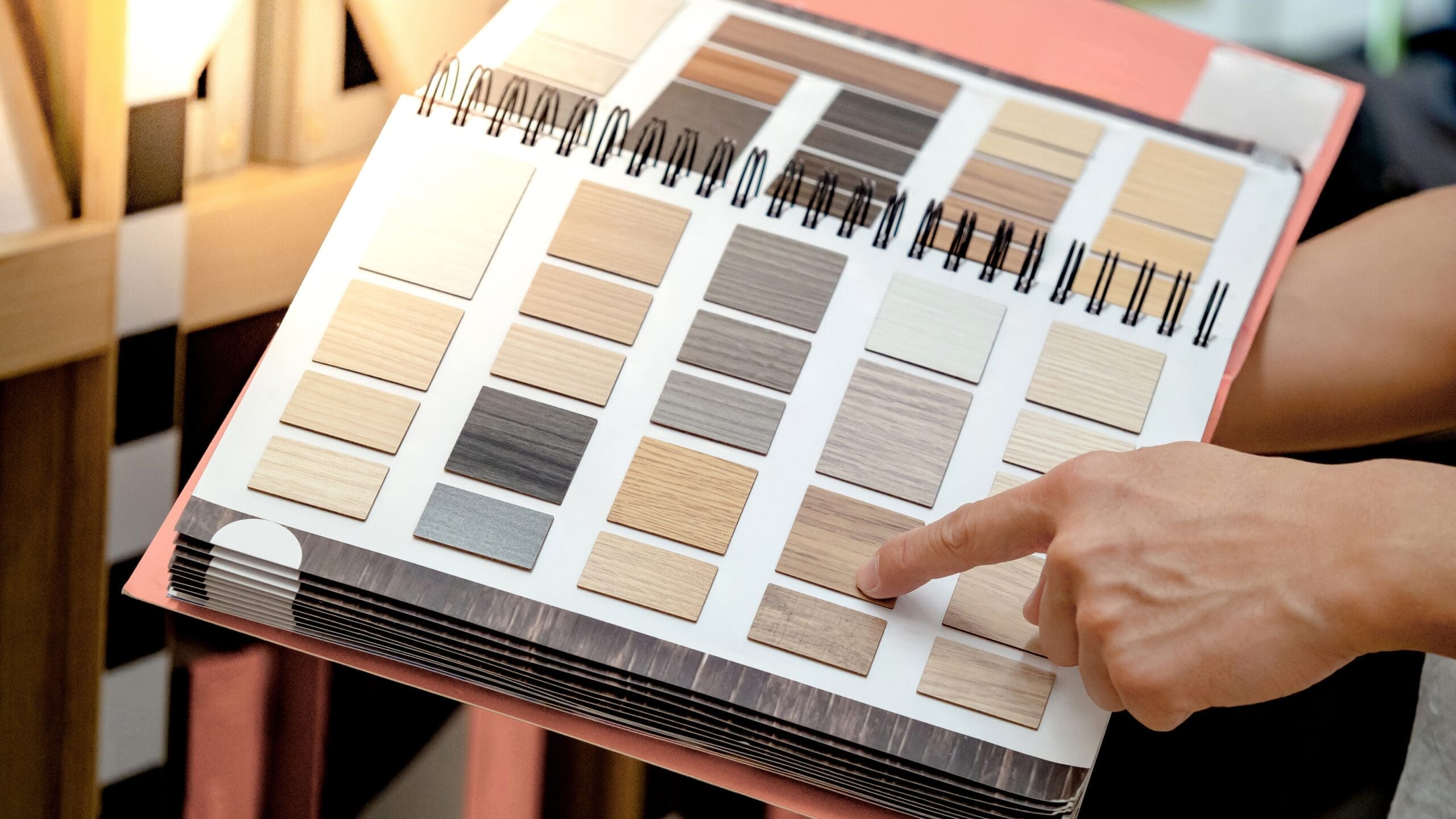Interior Designer CV Guide
Everything you need to know about getting the perfect Interior Designer CV
An interior designer creates functional and visually appealing indoor spaces, considering layout, materials and aesthetics. They require specific skills, experience and a compelling portfolio, which prospective employers will look for when hiring for the role. The first thing they will use to determine whether a candidate is suitable is a curriculum vitae (CV). Therefore, when you apply for a new job as an interior designer, you will need a compelling CV to stand out from other applicants.
All CVs are different. Therefore, how you write yours will depend on your background and preferences. However, you should ensure it is well-structured, professional, clear and concise. You should also tailor your information to the specific interior designer role. The aim is to grab the attention of potential employers and make a strong impression.
In this article, we will provide guidance on how to write an interior designer CV, what to include, some tips and an example to help you get started. It will hopefully increase your chances of securing an interview and, ultimately, the job.
In this Interior Designer CV guide
What to include in an Interior Designer CV
Knowing what to include in your CV and incorporating the correct information is crucial to success. One thing to remember is that it is an overview of your academic and professional history, where you provide details of your qualifications, skills and experiences relevant to the type of interior designer position you want. You should also include key elements that highlight your creative and technical skills.
A typical CV is divided into sections including contact information, professional summary, education, work experience, key skills, achievements and references. In each section, you should include the most relevant aspects of your professional journey in line with the interior designer job. Let us look at what you can add to each of these sections.
Contact information
At the very top of your CV should be your contact information, and it is essential to make this section visible and concise to allow potential employers to reach you easily. Here is what to include:
- Full name – your full name, as you want it to appear professionally.
- Location – add your location, such as your town, city and/or county (optional).
- Phone number – include a number where employers can reach you.
- Email address – use a professional email that reflects your name (avoid casual or unprofessional email addresses).
- LinkedIn or portfolio – provide links to your LinkedIn profile or personal website (optional).
There is some information you should omit from your CV for privacy and potential bias reasons, such as:
- Personal information, e.g. age, date of birth, gender, sexual orientation, marital status, religion and national insurance number.
- A photo, unless it is requested.
- Full home address.
- Personal social media account links if they are irrelevant.
Professional summary
Your professional summary (personal statement, executive summary, professional profile or career summary) typically goes below your contact information at the top of your CV. It is a brief, impactful statement highlighting your key qualifications, skills, experiences and career goals. It serves as an introduction to your CV, giving potential employers a quick snapshot of who you are and why you are a strong candidate for the role.
Ensuring your professional summary is well-crafted is vital, as it is usually one of the first things employers will read. If it is strong and relevant, potential employers may want to read more of your CV. Consider it an initial sales pitch where you sell yourself as the best fit for the interior designer position.
You should aim for your summary to be between 3-5 lines, highlighting your creative skills, relevant experience and ability to meet clients’ needs. Here are some examples of elements you may want to include:
- Professional title – start the sentence strong with an action verb and add your current or previous job title, such as “Experienced interior designer”.
- Relevant experience – mention the years you have worked in interior design or related roles.
- Design expertise – mention your specialisation, such as residential, commercial or sustainable interior design.
- Notable achievements – briefly showcase key accomplishments or impactful projects you have worked on.
- Key skills – emphasise your core competencies, such as space planning, colour theory or proficiency in design tools like AutoCAD or SketchUp.
- Client-centric approach – highlight your ability to understand and deliver on client needs while managing budgets and timelines.
- Career goals – tailor this to the job by showing your eagerness to contribute to the company.
- Passion – express your enthusiasm for your work or field to showcase your genuine interest and dedication.
Here is an example of how to put a professional summary together for an interior designer role:
“Certified interior designer with 8+ years of experience in residential and commercial projects. Skilled in space planning, project management and advanced design tools like AutoCAD. Passionate about creating functional and visually stunning spaces tailored to client needs. Proven ability to manage budgets and timelines effectively while exceeding expectations. Seeking to contribute creative expertise to a dynamic design firm”.
Education
The next section, following your professional summary, can be your education or work experience. You may want to add the former first if you have limited experience in interior design, i.e. you are early in your career or are applying for roles where specific qualifications are essential.
The education section of a CV is where you showcase your relevant academic background and qualifications, proving that you have the foundational knowledge and skills needed for the job. For an interior designer, it highlights your formal training, whether a degree in Interior Design, certifications in design software or relevant coursework in areas like architecture or sustainable design. Here are some pointers on what to include:
- Your highest qualification – start with any degrees you have, such as a Bachelor’s or Master’s in Interior Design, Architecture or a related field. For each qualification, include:
- Degree type and subject, e.g. BA (Hons) in Interior Design.
- Institution name and location.
- Dates attended or completion date (month and year)
- Degree classification (e.g. First Class Honours).
- Training and certifications – if you have completed additional courses or certifications, such as in design software (e.g. AutoCAD, SketchUp) or sustainable design, list them below your formal education.
- Coursework or projects – if you have recently graduated or have limited work experience, you can mention specific modules, projects or achievements relevant to interior design, like space planning or furniture design.
If you have higher qualifications in interior design, do not worry about including your lower qualifications, such as GCSEs and A levels. However, you can add them if the job posting mentions them or if you have limited higher education or professional experience. If you do add them, detail the subjects and grades.
A well-crafted education section can demonstrate your dedication to learning and professional growth – essential in competitive fields like interior design. Remember to tailor this section to the role and emphasise qualifications that align with the job description.
Work experience/employment history
In the work experience section, which you can add before or after your education, you provide specific details about your professional background. You can include jobs, internships, apprenticeships, and even volunteering if you have had limited experience in paid roles. Do not highlight gaps in employment, reasons for leaving previous jobs or any negative experiences.
When you effectively write this section, you will demonstrate to potential employers how you have applied your knowledge in real-world settings and give them a clear view of your practical skills and achievements. It is your opportunity to show them that you have the expertise to fulfil the requirements of the interior designer position.
You should add your work experience in reverse chronological order (the most recent role first) and include the jobs that align most with the position you are applying for. Here are some examples of what you can include:
- Job title – clearly state your previous roles, e.g. “Interior Designer”.
- Employer name – mention the company name and location or the clients you have worked with.
- Dates of employment – include start and end dates (month/year) for each position.
- Key responsibilities – add three to five bullet points outlining your duties relevant to the role, and start each sentence with a strong action verb. Try not to list responsibilities – include your achievements, impact and skills to make this section more compelling.
Here is an example of how you can write the work experience section:
Work experience
Interior Designer. Creative Spaces Ltd, London. June 2021 – Present.
- Designed and executed interior layouts for residential and commercial projects, ensuring alignment with client briefs and budgets.
- Utilised AutoCAD and SketchUp to create detailed floor plans and 3D visualisations.
- Collaborated with contractors and suppliers to source sustainable materials and bespoke furnishings.
- Successfully completed a high-profile office redesign project, increasing employee satisfaction by 25%.
- Contributed to a team project that won the 2020 UK Interior Design Award for Best Small Space Design.
Key skills and achievements
Key skills refer to the abilities, expertise and qualities you possess that make you suitable for a particular role or task. Achievements are specific accomplishments, contributions and results that showcase the impact of your skills in action. Together, they are powerful elements of your CV because they show what you are capable of and how you have applied those capabilities to create measurable success.
You can add your key skills and achievements to various CV sections. You can weave them into your work experience, combine them under one heading – “Key skills and Achievements”, or have standalone sections. The latter may be better if you have many stand-out examples. We will look at how you can focus on achievements later.
Let us start with what to include for your key skills. Regardless of which section you add them to, include hard and soft skills.
- Hard skills – are specific, teachable abilities or knowledge that are usually quantifiable and often learned through training or experience. Some examples of hard skills for an interior designer include material knowledge, colour theory, space planning, project management, building codes and regulations and CAD software proficiency:
- Soft skills – relate to personality traits and how you interact with others and handle tasks. They are trickier to measure but equally vital and can also be transferable. Some examples of soft skills for an interior designer include communication, creativity, problem-solving, attention to detail, collaboration, teamwork and adaptability.
Here are a couple of examples:
- “Led a team to deliver a high-profile interior design project, showcasing exceptional leadership and project management skills”.
- “Improved customer satisfaction scores by 20% through excellent client communication”.
Remember to review the job posting, highlight skills the employer is looking for and include those that match their needs in your CV.
Other information
We have looked at some of the main sections of most CVs. As you write yours, you may find that some of your information does not fit in these sections or you want certain aspects of your background to stand out to potential employers. If this is the case, you can add additional sections and content, and here are some examples:
- Certifications and training – you may want to keep your education section for formal qualifications, such as degrees, and have a separate one for industry-specific courses or additional design training.
- Portfolio link or projects – you could have a dedicated section highlighting key projects, styles and designs you have worked on, including any partnerships or work with architects, decorators, or brands. Where relevant, include a link to your portfolio so employers can gauge your suitability for their interior designer position. You could also include if you have displayed your work at any events, galleries or showcases, as it can also be an impressive addition.
- Software proficiency – you may want to have a stand-out section listing programs like AutoCAD, SketchUp, Adobe Photoshop or 3D rendering tools in which you are skilled.
- Client testimonials – where applicable, you could include brief positive feedback from previous clients.
- Publications and media features – if your work has been featured in magazines, blogs, or design platforms, mention it.
- Languages – having an additional section for languages can be particularly helpful if you work internationally or with a diverse clientele.
- Professional memberships – you could have a section detailing whether you are part of relevant organisations, such as the British Institute of Interior Design (BIID) and the Society of British & International Interior Design (SBID). It can show credibility and a desire to develop professionally.
- Hobbies and interests – if you have ones relevant to interior design, such as a passion for architecture, art or travel, it can be useful to include them.
When you add other sections to your CV, ensure they add value. Avoid adding too many, as it can result in information getting lost and making the document more cluttered. You want it easy for potential employers to read and focus on the specific interior designer role you are applying for.
References
In the last section, references, you provide contact details of 2-3 individuals (referees) who can vouch for your skills, experience, work ethic and character. They are typically former employers, managers, colleagues, professors, tutors or mentors, but never family members or friends.
The reference section is crucial as it adds authenticity to your application by externally validating your claims. It provides employers with deeper insights into your work ethic, abilities and personality from someone who has worked closely with you. Overall, having strong references can boost an employer’s confidence in your candidacy, especially if they are undecided.
When writing the reference section, check the job posting to see if they ask for specific contact information at this stage. If not, you can simply state – “References available upon request” under the section header, which can leave space for other content. If you are required to provide referee’s details, include the following information:
- Full name – ensure you spell it correctly.
- Job title – their current title or the title they held while working with you.
- Company name – the organisation they work or worked for.
- Email address – a professional email is preferred.
- Phone number – include their work or mobile number (ensure it is up to date).
- Relationship – clarify how you know this person (e.g. “Former Manager” or “University Lecturer”).
Always ensure you ask for the referee’s permission before adding them to your CV and provide information about the job you are applying for so they can tailor their reference.
Tips for writing an Interior Designer CV
Writing an outstanding CV is not just about adding the main sections we have just covered. It is also about making it professional, well-structured, clear, engaging and relevant. Here are also some general tips to help you write a stand-out interior designer CV:
- Customise it to the role – tailor your CV for each job application by emphasising skills and experiences relevant to the specific role and company. You can also use keywords from the job description, which is especially important for Applicant Tracking Systems (ATS).
- Ensure it is clear and concise – stick to a one- or two-page length, depending on your experience, and make it easy for potential employers to read and find the information they want. Avoid adding unnecessary jargon and buzzwords that do not add value.
- Never lie – always be truthful about your qualifications, skills, experiences and achievements, as employers are likely to check. Getting caught out can be embarrassing at best and have serious repercussions at worst.
- Use action verbs – use action-orientated language to make your accomplishments and skills sound dynamic and impactful. For example, use verbs like designed, conceptualised, collaborated, executed, innovated, crafted, presented, consulted and transformed to showcase your experience creating spaces and working with clients.
- Use professional and consistent formatting – you can help your CV stand out by:
- Using a clean, professional layout with clear sections, headings and bullet points. Avoid long paragraphs.
- Using professional, simple and clear language, avoiding slang or overly casual expressions.
- Avoiding personal pronouns for a cleaner, more professional tone. Instead of writing, “I achieved a high client satisfaction rate…”, write “Achieved high client satisfaction…”.
- Using the same tense throughout your CV. Typically, past tense is used for previous jobs, and present tense is used for your current role.
- Avoiding excessive use of fancy designs, colours and fonts.
- Sticking to a simple font like Arial, Calibri or Times New Roman and consistent size, e.g. 10-12 points.
- Ensuring your CV has adequate spacing to make it more visually appealing.
- Avoiding using personal photos, as it can distract and lead to bias.
- Using a digital format where possible. Save and send your CV as a PDF to ensure the formatting stays intact when viewed on different devices.
- Check for errors – proofread multiple times (or have someone else do it) to ensure no grammar or spelling mistakes. A CV full of errors can distract from the content and create a poor impression.

Focus on achievements
To increase your chances of a successful application, you should focus on your achievements in your CV. It involves more than listing your responsibilities, i.e. what you did in your previous roles. It requires you to showcase your previous impacts and any successes you had, i.e. how well you did it.
Achievements on a CV are crucial, as they enable prospective employers to see how you have added value in your previous jobs, which provides weight to your expertise. It can also differentiate you from candidates who have just listed their previous duties on their CVs.
When focusing on your achievements, you should demonstrate your ability to create inspiring spaces, manage projects effectively and contribute to client satisfaction. Here are some pointers on how to write compelling achievements:
- Tailor your achievements – review the job description, identify achievements most relevant to the role and match the employer’s priorities. For example, if they value high-end luxury, highlight premium renovations. Remember to put your most impressive achievements at the top.
- Quantify your success – use numbers, percentages and other metrics to make your accomplishments measurable and more compelling. For example, instead of “Improved client satisfaction”, try “Achieved a 95% client satisfaction rate (based on post-project surveys) through proactive communication and tailored design solutions”.
- Use action-packed language – begin each of your achievements with strong action verbs, such as designed, increased, created, presented, improved, reduced, led and transformed. For example: “Transformed a dull lobby into a luxury reception area that attracted 20% more walk-in customers”.
- Focus on results, not just responsibilities – think about the positive outcomes of your actions and the difference you made. Have you?
- Won design competitions or been featured in publications.
- Contributed to revenue growth through your designs.
- Had designs that improved spaces or met client needs.
- Received positive feedback from clients.
- Examples of stand-out projects.
- Any key skills where you have accomplished something significant.
- Use the STAR method – structure your achievements by using the STAR method. For example:
- Situation – Set the context. Describe the project, challenge, or client request.
- Task – Define your role and responsibility.
- Action – Explain the steps you took to achieve the goal.
- Result – Highlight the impact using measurable outcomes.
Here are some examples of achievements for an interior designer:
- Improved space efficiency – redesigned an office layout that increased productivity by 30%.
- Budget management – delivered a high-end interior makeover while reducing costs by 15%.
- Client satisfaction – achieved a 95% client approval rating based on post-project surveys.
- Industry recognition – won “Best Residential Design” at a local interior design award ceremony.
- Project leadership – led a team of designers on a £500,000 luxury hotel renovation.
- Sustainability impact – integrated eco-friendly materials, reducing carbon footprint by 20%.
Remember, you can have a separate section for your achievements, combine them with your key skills or weave them into your work experience.
Describe your experience
Describing experience on a CV involves highlighting your previous jobs, internships, placements and voluntary work. It is also about showcasing your skills, achievements and growth in a way that aligns with the job you are applying for. It is crucial to describe your experience effectively, as employers will use this information to evaluate your suitability for the interior designer job.
You will describe your experience throughout your CV, but mainly in two sections – professional summary and work experience:
- Professional summary – although this is a short 3-5 line paragraph, you should briefly describe your key skills, experience and achievements relevant to the job you are applying for. You should begin with a strong action verb and a short statement about your role and years of experience. The paragraph should be concise, impactful and tailored to the role.
- Work experience – you will mainly describe your experience in this section. Your descriptions should include your previous job titles, company names, locations and dates of employment. Your responsibilities should be in bullet point form and start with an action verb if possible. Make your descriptions stand out, weave in your key skills and achievements, and remember to customise them to the position.
If you are in a position where you have limited direct experience as an interior designer, you can still effectively describe your experience. You should emphasise transferable skills, personal projects and your passion for the field. Here are some pointers to help:
- Highlight transferable skills – consider where you have developed relevant skills in other jobs, education, voluntary roles and personal life. Mention those valuable for interior designers, such as creativity, project management, communication, problem-solving and attention to detail. Technical skills, like proficiency in design software (SketchUp, AutoCAD, Adobe Photoshop, etc.), can be a big plus.
- Focus on education and training – list any courses, workshops or certifications you have completed in interior design or related fields. Even online training is worth a mention.
- Showcase personal projects – you can include examples of spaces you have designed and organised for yourself, friends or family. High-quality photos of these projects can demonstrate your talent. You should also create a portfolio showcasing your design ideas, mood boards or sketches to demonstrate your potential.
- Add any volunteering or freelancing – you could mention if you have volunteered your services to local charities, community projects or small businesses to gain hands-on experience and build your portfolio.
- Include relevant hobbies and interests – list hobbies that showcase creativity, technical skills or design passion, e.g. DIY projects, sketching, photography, upcycling, blogging about design trends and any other artistic pursuits.
- Express enthusiasm for the role – use your CV and cover letter to convey your passion for interior design and your eagerness to learn and grow in the field. You can also tailor your professional summary, e.g.:
- “Passionate and detail-oriented aspiring interior designer with a strong eye for aesthetics, colour coordination and spatial planning. Adept at creating mood boards, organising spaces and researching design trends. Skilled in digital design tools, with a keen interest in sustainable and functional interior solutions. Enthusiastic about transforming spaces to enhance comfort and style, eager to apply creativity and technical knowledge to real-world projects.”
Do not be deterred if you have limited experience; everyone has to start somewhere. Demonstrating creativity, passion and willingness to learn, along with a strong portfolio, can help you make a positive impression.

Tailor your CV to the Interior Designer position
Tailoring your CV has been mentioned many times already, and it is because it is crucial. When you customise your CV and align it with the specific interior designer role, it shows employers that you have made an effort, you understand their needs and can match their requirements. It also helps your CV stand out in applicant tracking systems (ATS) and during manual reviews.
Instead of sending a generic CV, tailoring involves emphasising your most relevant qualifications, skills, experiences and achievements and adapting various sections to align with the job posting. Here are tips on how to effectively tailor your CV:
- Carefully read the job description – analyse the job posting, identify the key requirements of the role and note the qualifications, skills and experience the employer has mentioned. Compare your credentials and attributes and include those most relevant. Do not forget to add keywords from the job posting to help pass ATS filters.
- Do some research – look at the organisation’s website and social media pages for their mission, values, ethos, services, recent news and client reviews. Identify what their priorities are and weave these themes into your CV.
- Customise sections within your CV – go through each section of your CV and make adjustments where necessary, for example:
- Professional summary – ensure it reflects the specific role and mention the company name.
- Education – if specific qualifications are mentioned in the posting, ensure you include them where relevant to your academic background. Also, detail relevant certifications, training and professional memberships that the job description mentions.
- Work experience – include previous jobs that are relevant to interior design or include transferable skills and experience if you are starting your career.
- Skills – match your hard and soft skills to those detailed in the job description. For example, if they mention CAD software skills, emphasise them if relevant.
- Achievements – choose relevant accomplishments. For example, if they emphasise client satisfaction, highlight where you have achieved this, preferably with numbers to make more impact.
- References – choose referees who can speak to your interior design expertise or transferable skills you can use in the role.
- Do not forget your cover letter – if the job posting requests a cover letter with your application, tailor it to the specific interior designer job by using examples from your CV to support your claims. Address the letter to the individual mentioned in the job posting and add the company name and role you are applying for.
It is important to note that tailoring a CV does not guarantee an interview or a job. However, it can increase your chances of standing out from other candidates, especially those who have sent generic CVs. It shows employers that you are enthusiastic about the job and want to move to the next stage of the process.
Good luck!



